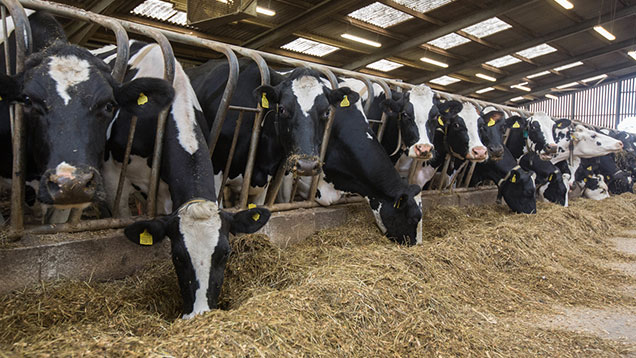Low soya meal prices let farmers lock-in costs
 © Tim Scrivener
© Tim Scrivener Livestock and dairy farmers still have the chance to lock-in low protein feed prices, before weather and more planting news bring uncertainty.
Soya meal is still trading at five-year lows, available on-farm for £270-280/t even in 2016.
This compares with £320-£330/t last summer.
Plenty of positive news about world soya bean supplies has driven the market downwards.
See also: Farmers Weekly prices and trends
Nov-15 US soya bean futures hit a contract low on Tuesday (26 May), with American planting progress above average.
Currency
And early May’s shock Conservative election win saw the pound strengthen against the dollar, pushing soya meal prices as low as £260/t before recovering in the past fortnight.
“With the focus of the markets switching to North American soya bean plantings – and associated weather risks – there are good levels of cover being booked for both the summer and next winter by those who believe these are sensible prices to lock into a budget.”
Chris Davidson, KW
KW national dried/liquid feeds manager Chris Davidson said the USDA’s 500m-bushel estimate for 2015-16 US year-end soya bean stocks had boosted confidence in high supplies.
This was despite 2014-15 figure being cut by 20m bushels to 350m bushels.
“With the focus of the markets switching to North American soya bean plantings – and associated weather risks – there are good levels of cover being booked for both the summer and next winter by those who believe these are sensible prices to lock into a budget,” Mr Davidson said.
Rape meal
Rape meal is proving too expensive for many producers, with values above £200/t for nearby months heading down towards £170/t for August through October.
Rather than trading at the 60% of soya, rape meal values are in the 67-69% range.
Alternatives such as British or imported wheat distillers’ feed are proving more popular.
Anglia Farmers feed and raw materials manager Phil Garnham said these lows were unlikely to last forever, following four months of little negative information on crop production.
He said some producers had booked cover right in 2016 but many dairy farmers were more uncertain, with milk prices still under severe pressure.
“The [feed] market has a bottom to it and we probably have already seen it.
“What we have now is the doubt factor: do they want to commit?”
